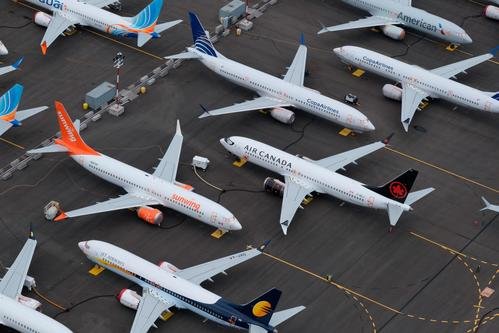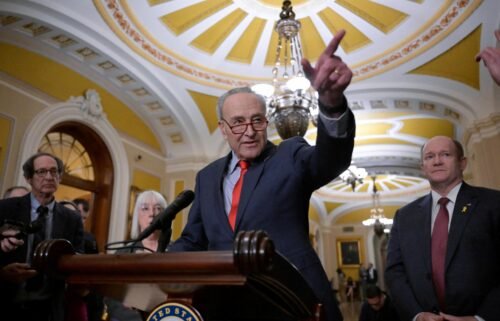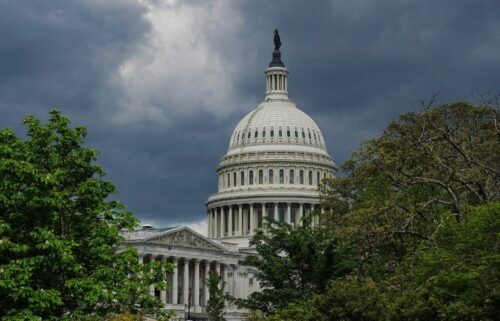Whistleblower testifies that Boeing ignored pleas to shut down 737 MAX production

A government analysis after the first Boeing 737 MAX crash last fall found the jets were at a significant risk for future crashes, but the agency did not ground the planes until after a second one fell from the sky.
Those two crashes — a Lion Air jet into the Java Sea in October 2018 and an Ethiopian Airlines plane near Addis Ababa in March — killed 346 people.
A Federal Aviation Administration analysis document dated December 2018, weeks after the first crash, predicted there would be more than 15 additional fatal crashes of the MAX over its lifetime. The document was made public Wednesday at a House Transportation Committee hearing.
FAA Administrator Stephen Dickson said that based on that document and “what I know today,” he would have acted to ground the plane had he been administrator at the time. He took office in August, long after the analysis and grounding decisions were made.
“The FAA rolled the dice on the safety of the traveling public,” committee Chairman Peter DeFazio, a Democrat, said.
Dickson defended the agency’s decision making, which he said is “data driven.”
“With all due respect, any indication that any level of accidents are acceptable is not reflective of the 45,000 dedicated professionals at the FAA,” he said.
The document was first reported by The Wall Street Journal.
In a statement, Boeing said the analysis determined that an emergency notice with instructions for pilots “sufficed to allow continued operation of the MAX fleet until changes to the MCAS software could be implemented.”
Major pilot groups have said that notice was the first they learned of the MCAS system, a computerized stabilization feature new to the MAX that investigators have revealed received erroneous data and pushed the crashed planes into a steep dive. Boeing is developing a software fix that makes the system less potent and uses a second sensor to verify the incoming data is correct.
Dickson acknowledged at the hearing that the FAA panel convened to review whether corrective actions were necessary did not recommend the plane be grounded. He could not say whether that panel reviewed the document estimating the high risk of future crashes.
He also said he has not decided whether to impose penalties upon Boeing related to the MAX’s flaws.
‘Those warnings were ignored’
Whistleblowers at the hearing also raised concerns about the culture at Boeing and the FAA.
One of the whistleblowers, Ed Pierson, is a former Boeing employee who worked on the 737 MAX program and said he urged managers to shut down the production line because of mistakes and cut corners, but that his recommendations fell on deaf ears.
He said pressure to produce planes and issues with obtaining parts meant the employees assembling the planes were overworked and at risk of making mistakes.
“I formally warned Boeing leadership in writing on multiple occasions — specifically, once before the Lion Air crash and again before the Ethiopian Airlines crash about potential airplane risk due to the unstable operating environment within the factory,” he said. “Those warnings were ignored.”
“You can have the most amazing design by the most brilliant engineers and flown by the most talented pilots, but if you have a tired mechanic or an electrician who is overworked or a technician that is stressed because they haven’t had a chance to take care of their family because they’ve been working so many hours, it could all be for naught,” he said.
Wednesday was Pierson’s first time making his concerns publicly, but his concerns were presented anonymously to Boeing CEO Dennis Muilenburg in October. Muilenburg said at the time that the company “did have several follow-up sessions with” him, and that the company took “a number of actions.”
“We implemented some additional quality checkpoints in the process,” Muilenburg said.
Pierson said the faulty sensor data should be a red flag, because the sensor in question is a “historically reliable part.”
Another whistleblower, former FAA employee Michael Collins, said he witnessed senior managers side with Boeing, rather than FAA experts, when safety concerns were identified.
In one issue, he said a senior manager overruled the concerns of “13 engineers, one project pilot, and four managers.”
Those FAA employees believed Boeing’s longstanding rudder design was no longer up to the task because of other changes to the aircraft — and “FAA management initially agreed.”
“As the certification date neared, and Boeing had not made a design change, FAA management decided not to require that Boeing design the 50 year old rudder control design,” he said.
The crashes and information revealed since have raised questions about whether the FAA and Boeing have an inappropriately close relationship. Several investigative panels and the House committee are reviewing whether the aircraft certification process requires changes.
“The system is not broken,” Dickson said, although he allowed that the agency’s procedures “need to be improved each and every day.”
737 MAX still grounded
Dickson said in an interview on CNBC prior to his testimony that he expects the grounding of the plane to “extend into 2020.” Regulators have at least 10 additional steps to complete before the 737 Max can fly again, he said.
The plane was grounded by regulators in March after the second crash of a jet flown by Ethiopian Airlines.
This story has been updated with details from the hearing.




